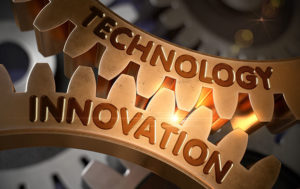
It is in the darkest time of the year with the arrival of winter thatperhaps we most appreciate our light bulbs. It isn’t just the lightson the holiday decorations that provide that festive glow, but reallythe fact that the light bulb makes our daily modern life possible. Thelight bulb is taken for granted, and until recently it hadn’t reallyevolved much in more than a century.
The incandescent light bulb, which Thomas Edison perfected and helpedcommercialize — even if others including Alexander Lodygin, JeanEugne Robert-Houdin and Heinrich Gbel had developed earlier versions– has changed little in nearly 140 years. It was a prime example of the mantra if it isn’t broken, don’t fix it.
Today the incandescent is for all practical purposes at the end of itslifecycle. Not because it isn’t a viable technology, and certainly notbecause it is broken — but really because it has numerous shortcomings — notably in efficiency. The biggest failing with the incandescent lightbulb is that it doesn’t have a particularly long life and much of theenergy used to illuminate a room is actually lost as heat. Whileimprovements have been made, the basic technology behind theincandescent bulb is one that has flaws that simply cannot be remedied.
This is why in recent years there have been moves by federal lawmakersto push for a replacement for the incandescent, while other viabletechnologies including the bright but all-too-dangerous halogen lampshave faced a phase out or outright ban. As a result many consumers mayfind themselves facing a new dark age in the home when it comes tohaving a warm glow in the living room.
First Try: The CFL
Ironically the first true contender to the incandescent for mostresidential users was a technology that had just as many shortcomings.Halogen lamps were a good alternative to the incandescent as theseprovided a nice, warm bright light — but the bulbs were so hot thatthese could easily cause fires. Hence, the Halogens have all but faded toblack.
The incandescent is now following suit.
The campaign to phase out incandescent light bulbs for general lightinghas not been limited to the United States. Regulators in Brazil,Venezuela, the European Union, Switzerland and Australia began tophase out the century old lighting technology in 2009. Argentinaand Russia followed suit in 2012. The United States, Canada, Mexico,Malaysia and South Korea opted to pass measures that phased out thebulbs for general lighting in favor of more energy-efficient lightingalternatives in 2014.
This move, which was years in coming, didn’t exactly leave consumersin the dark, but it did create some confusion and by some accountsleft users with light that was anything but satisfactory. The solutionwas the compact fluorescent light (CFL), known for its twisted designand, by some accounts, its off putting color tone that isn’t exactlywarm.
“The U.S. government decided that if you can get a compact fluorescentthat gives 100 watts of light that is good enough,” said professionallighting designer Randall Whitehead of Randall Whitehead LightingSolutions. “It didn’t seem to matter that the bulb hums, doesn’t lookas good or couldn’t be easily dimmed.
“The government was thinking of wattage equivalent, and didn’t seem toconsider other factors,” Whitehead told TechNewsWorld. “It was a raceto find an affordable alternative and the CFL won.”
This isn’t to say that fluorescents will go away. Fluorescentlights are still used in commercial spaces and in the home the longtube bulbs are a popular choice for garages, basements and otherspaces where a lot of light is needed.
“[Fluorescent bulbs] are still viable as cost effective lighting forbusinesses and commercial spaces,” added Kelly A. Cunningham, outreach director of the California Lighting Technology Center, UC Davis. “It isn’t fair to say that these bulbs were a dead-end on the evolutionary tree.”
New Alphabet
Understanding the shortcomings of CFLs requires understanding anotherconcept in lighting — namely the coloring rendering index (CRI), whichis considered the gold standard for determining the quality oflighting. Incandescent lights typically score in the high 90s but CFLsweren’t even close.
“CFLs were pushed into the American home through manufacturers andEnergy Star,” Cunningham told TechNewsWorld. “This may have beenwell-intended, but it was really a race to the bottom. It was thefirst real challenger to incandescent bulbs and no one seemed to payattention to the CRI.”
CFLs tend to give off light that is bluer or greener and reds don’trender as well, Cunningham noted. “In other parts of the world thiswasn’t a problem because there had been a preference for that coolertone of lights, but the bigger issue was that there wasn’t theeducation that you could get warmer light with CFLs.”
As noted, traditional fluorescent lights do the job in work spacesand basements and provide warm as well as cool light. This fact wasnever addressed with the CFLs. This issue could be essentially moot –if not muted now — because the last couple of years have seen theemergence of another lighting technology: the light emitting diode, or LED.
Watts vs. Lumens
LEDs have been slow to arrive mainly because of the cost involved to produce these for light bulbs. This is somewhat ironic since LED as atechnology has actually existed since the 1950s. However, the otherissue for consumers is that because LEDs use far lesselectricity they can’t be easily compared to incandescent bulbs. Thus manyconsumers thought an 11 watt LED couldn’t possibly compare to a 60 wattincandescent.
This is why the concept of lumens needs to be considered whendetermining comparable brightness.
“Wattage has never been a good indicator of brightness as it is themeasurement of energy needed to produce light for a traditional bulb,not the measurement of light that it puts out,” said Catherine Feliz,LED lamps product manager for Philips Lighting. “Lumens is the measureof luminous flux or the amount of visible light emitted by a lightingproduct.
“With LED bulbs using significantly less energy than traditional lightbulbs, wattage equivalencies are being used as a transition, becauseas consumers we have been conditioned to buy bulbs this way,” Feliztold TechNewsWorld. “Lumens has become the de-facto standard formeasurement as lumens are a quantifiable measurement of how much lightis given off.”
Price Point Solutions
Cost had been the biggest factor with this technology, but recently progress has been made.
“Initially LEDs were expensive as they were a new technology and borethe cost of innovation and introduction to market,” noted Feliz.”Today, quality LEDs are very affordable, especially when utilityrebates get factored in, making them more affordable than ever before.
“The fact that an LED bulb uses 80 percent less energy and will last20 times longer more than compensates for the additional cost,” shenoted. “Consumers need to start looking at LEDs like any otherappliance in their home and the amount of money it will save over itslife vs. the initial up-front cost.”
Temperature Control
Although LEDs offer the brightness of incandescent and are fastapproaching CRI numbers that would be considered excellent, there arestill challenges to overcome.
Despite of the fact that LEDs don’t emit heat, other electronic components in a lamp can create heat. Optimizing thermal management is key toperformance and lifetime. This has also caused confusion because LEDshave for so long been billed as producing no heat, and few haveaddressed the issue of heat generated around the bulbs.
“LEDs need to be kept cool,” explained Cunningham. “That might requireheat sinks or other technology to ensure that these don’t overheat.”
In fact one needs to think of an LED light bulb more as an LED lampthat screws into a traditional fixture. The bulb may not product heatbut the other parts of this lamp do.
Heat is also a problem in some applications because, “heat impacts theoverall lifetime of the lamp,” Feliz pointed out.
This is also why in some cases it is simply easier to replace an oldtraditional fixture with a solid state lighting solution that includesthe LEDs inside as it is designed to dissipate the heat.
Lighting the Future
While the incandescent bulbs lasted 100 years, CFLs could have a muchshorter life, but LEDs could be bulbs that are truly passed down toone’s kids and beyond.
“I like to think that today’s LED bulbs could last longer than somemarriages,” noted Whitehead. “But the technology itself will likelyevolve as we begin to see LEDs that behave and give off the light thatlooks like an incandescent.”
LED will also likely see competition from OLED (organic light emittingdiode) and other technologies. Already, California Lighting TechnologyCenter program is exploring OLED options and possibilities. In this waylighting is mirroring recent developments in TV panels as LCD lightengines gave way to LED-powered LCD panels, with OLED beginning tomake inroads.
“There is a lot of exciting innovation that will happen, as long as weas consumers allow it to happen,” said Cunningham. “Lighting isexperiencing a similar, but less dramatic move to the switch from bighundred pound boxes for TV to wall-mounted screens.
“Of course we spend more time staring at TV than the light bulb butit is time to rethink everything we know about lighting.”





















































